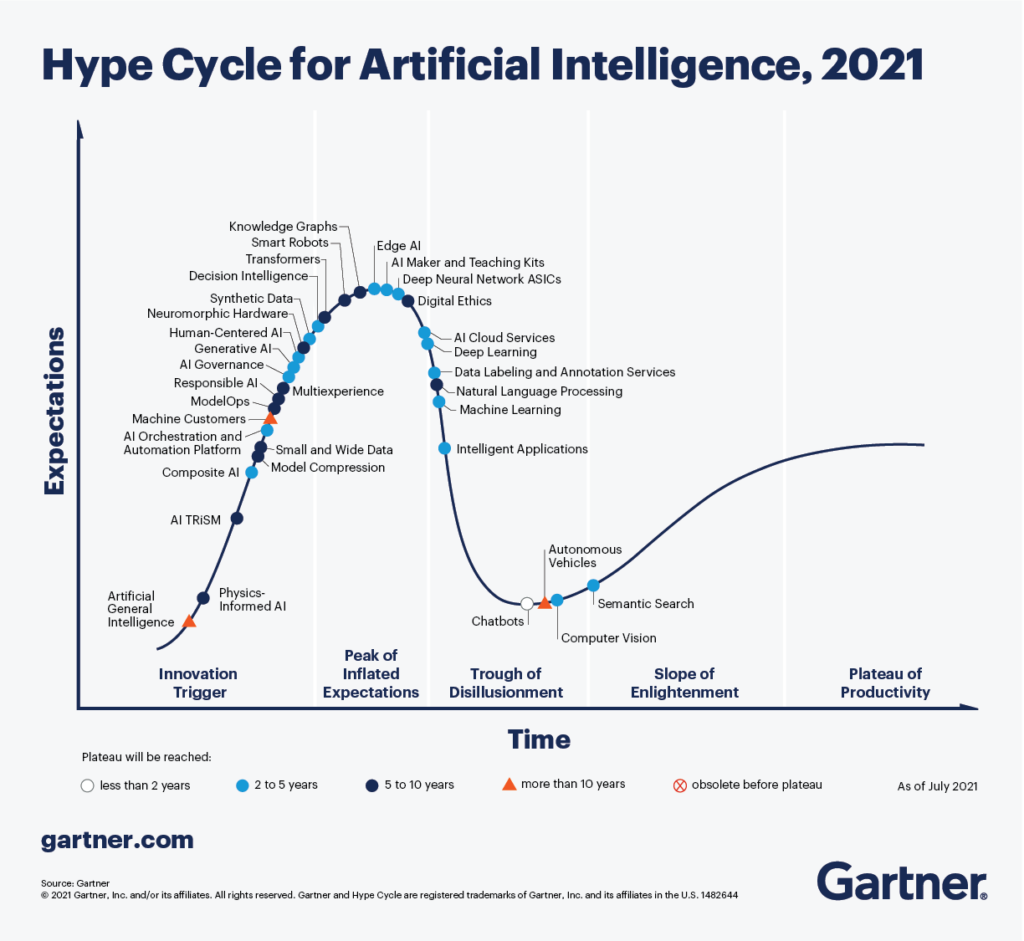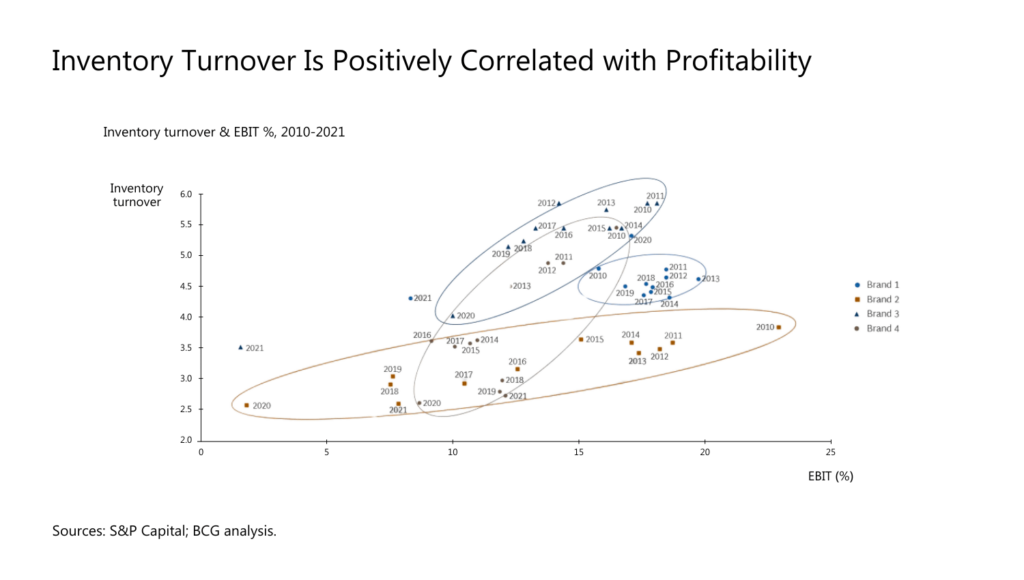Due to inflation, consumers had to reduce discretionary spending over the past two years. But we’re now seeing a positive blip on the radar: end-of-year data says American consumer optimism reached pre-pandemic levels of 47% and the UK retail sales finally saw a 2.6% increase in January 2025.
Shoppers remain price-sensitive, seeking more affordable retailers, delaying purchases, and changing brands for private labels. So brands will continue to feel a profit margin squeeze. Yet, there are also ample shares of consumer wallets available. Many companies haven’t yet exhausted sources of digital growth as e-commerce still only accounts for 33% of total retail sales in the US and about 30% in the UK.
When it comes to e-commerce, competing on price (and potentially diluting the brand value) isn’t the only option to grow profits this year. The most successful online retailers are increasing their revenues through targeted investments in CX — and many bet on conversational AI in retail to bring the biggest returns this year.
Conversational AI in Retail: 6 Use Cases to Prioritize in 2025
The idea of having an automated chat agent on a retail website site is hardly new. Sephora and American Eagle Outfitters were among the first to launch Facebook Messenger chatbots in the mid-2010s, with loads of others following suit. By the end of 2016, businesses launched over 34,000 chatbots for customer support, marketing, and customer engagement.
But, as many of us remember: the first chatbots were more annoying than helpful. Poor command recognition, canned replies, and limited utility eventually made many retailers doubt their value. By 2021, Gartner moved “chatbots” to the trough of disillusionment stage in its Hype Cycle for Artificial Intelligence.

Source: Gartner
Things changed circa 2023 as large language models (LLMs) started to crop up. LLMs are much better at understanding content, sentiment, and synonyms thanks to their larger corpus of data and new natural language processing (NLP) techniques than the first rule-based chatbots were.
And with that came renewed interest from retailers. About 90% have already adopted conversational AI agents for onsite chat support. Conversational AI agents can provide a lot more value than simply answering questions about shipping policies and delivery statuses.
Edvantis AI development team believes that retail conversational AI can (and already does) deliver the biggest ROI.
Personalized Shopping Experiences
Unlike early chatbots, circling through a pre-programmed set of response templates, conversational AI agents can hold more nuanced conversations. LLMs are great at understanding context, synonyms, and sentiment, leading to more natural and engaging exchanges.
Even better is that with retrieval augmented generation (RAG), all-purpose LLMs like GPT-4, BERT, or Claude can be configured to interact with business data to provide more contextual precise responses. For example, RAG enables response generation, using data from connected business systems (e.g., a Microsoft Dynamics CRM or a digital experience management platform) or external data sources like weather reports or social media trends.
RAG allows conversational agents to produce more personalized replies and deliver more memorable customer experiences. For example, deliver:
- Product recommendations, based on past behaviors, preferences, or even real-time conversation cues
- Upsells and cross-sells, based on real-time predictions of the customer’s likelihood of conversion
- Next-best action recommendations, guiding the user through different stages of their journey such as product configuration or customization
Zalando’s new AI fashion assistant provides personalized style recommendations to logged-in customers across all markets. Leveraging Zalando’s proprietary models and OpenAI’s technology, the assistant offers localized advice in customers’ native languages. Users can ask context-aware questions like “What should I wear to my dad’s 60th birthday in Barcelona?” The AI considers location, weather, and event type to suggest appropriate outfits. Zalando posted a 4.5% increase in gross merchandise volume (GMV) for 2024 to €15.3 billion — a “growth fueled by marketing and better sell-through”, according to the company. And our hunch is that conversational AI played a part in those results.
Amazon has a similar AI shopping assistant, nicknamed Rufus, integrated directly into its ecommerce platform. Unlike Zalando, Amazon went to train its own fully custom LLM, which uses RAG to pull out information from trusted sources like product catalogs, customer reviews, community Q&A, and authorized Amazon Stores APIs. Thanks to this, Rufus can provide highly contextual answers to all sorts of product inquiries, ranging from “What are the differences between face wash and face cleansing oil?” to “What’s the best dinosaur toy under $20 for a five-year-old?”.
Frontline Workers Assistance
The flip side of digital sales is the growing cost and complexity of managing order fulfillment. While advanced robotics systems can streamline some labor-heaving warehousing tasks, loads of humans are still involved at different stages.
Conversational AI can offer greater support to warehouse and frontline workers, handling online order dispatches or in-store order fulfillment. An AI agent can provide real-time information about stock levels at different locations to confirm product availability, place orders, and manage assortment levels more efficiently. Combined with predictive analytics, such agents can also offer demand forecasting and automated reordering suggestions based on real-time data.
Walmart, for instance, has Ask Sam — a voice assistant for in-store associates that allows employees to quickly access stock information through simple voice commands. Associates can instantly find item locations, check prices, view sales data, review schedules, and communicate with team members—all hands-free and with minimal effort.
Target shortly followed suit with its Store Companion — a text-based Gen AI assistant, providing contextual support to store associates. It can instantly generate instructions for procedure-related questions like “How do I restart a cash register?” or “How to add a new user to Target Circle Card?”. “Streamlining day-to-day tasks goes a long way with our team members and adds up to more time spent with guests and a better guest experience across the store,” shared Jake Seaquist, store director at one of the pilot stores to adopt the AI assistant.
Supply Chain Management
Arguably the biggest advantage of conversational AI for retail operations is its ability to make data more accessible to business users. Instead of reviewing multiple complex BI dashboards, your SCM teams can use natural language commands to resurface important data quickly.
Conversational AI can make the biggest impact in two key supply chain areas:
- Order management: processing incoming orders, tracking fulfillment, and notifying customers about shipment statuses.
- Freight and delivery coordination: Real-time tracking information for dispatchers and drivers, alerts about changes or delays for better contingency planning.
The ability of AI agents to forecast demand is another key strength. They can factor in sales transactions, market trends, and customer behavior to accurately size up the demand, preventing overstock and stockouts.
In the fashion industry (among others), fast inventory turnover positively correlates with profitability. Yet, not all brands can quickly respond to short-term changes in demand, leading to missed sales opportunities and deadstock accumulation.

Source: BCG
Demand forecasting enables greater automation of the replenishment process. (Semi)autonomous agents can create and track new orders, process incoming replenishments, and alert staff when orders are placed, delivered, or delayed
Oracle’s newly released AI agents for supply chain management can provide targeted assistance with purchase requisitions, support warehouse operators in managing delivery processes, and enable suppliers to access company-specific policies more effectively. Moreover, they can help monitor and verify compliance with a company’s sustainability policies by helping shipping agents comply with hazardous materials regulations and summarize complex policy regulations.
90% of procurement leaders have considered or are already using AI agents to optimize operations in 2025.
Icertis
Merchandising Support
With the transition to omnichannel retail, merchandising teams have to deal with jumbo-sized product catalogs. Updates also need to happen faster as demand changes due to market saturation and trend shifts, while consumers’ expectations about product presentation (both online and offline) are higher than ever.
Conversational AI agents can supply contextual data (in multiple formats) to merchandising teams to help them adjust assortment, improve digital product presentation, and tailor product recommendations, based on real-time customer data. Many AI systems also rely on predictive analytics to anticipate trends, allowing retailers to optimize inventory and merchandising strategies proactively, leading to higher conversion rates and a more tailored brand experience.
Home retailer Wayfair used Google’s Gemini AI on Vertex AI to transform its product catalog management. By automating tasks like product tagging and categorization, the company has accelerated product launches by 500%, reduced costs by hundreds of thousands of dollars, and improved customer experience. Gemini also helps detect product information errors and flag inappropriate content, enhancing the platform’s accuracy and safety.
Conversica, in turn, recently launched conversational AI agents for auto retailers, which provide dealerships with real-time, comprehensive vehicle inventory data. The agents offer potential buyers personalized, detailed information about cars, including descriptions, images, pricing, features, specifications, and vehicle history, regardless of the dealer’s merchandising platform.
Customer Lifetime Value Management
To stay profitable, retailers should keep a 1:3 CAC: CLTV ratio — earn 3X more revenue from each customer as you spend acquiring them. However, this has become more challenging as online customer acquisition costs are on the rise and consumer brand loyalty is dwindling. In 2022, 79% of US consumers said they were loyal to specific brands, but the number has since shrunk to 66%.
To acquire and retail customers, retailers need to think beyond blanket promotions and generic loyalty programs — and that’s where conversational AI can help. Conversational agents (both customer-facing and internal) can help create richer VIP experiences for each customer to enable better organic growth and CLV improvements:
- Internal Gen AI tools can help streamline tasks like customer segmentation, marketing campaign development, promotion strategy planning, and more.
- Customer-facing solutions, in turn, can provide richer and faster on-site interactions, reducing churn.
The newly-announced Salesforce Agent Force for Retail allows businesses to deploy agents for guided shopping experiences, with personalized product recommendations and facilitate conversational checkouts. Or automate appointment scheduling with real-time availability updates for field services like deliveries, installations, and consultations. Lastly, the platform can also aid with loyalty and promotion planning. Marketers can use conversational prompts grounded in shopper, POS, and segmentation data to create hyper-personalized email content and subject lines for higher conversions.
Similarly, conversational AI can help build unique brand experiences. Men’s fashion retailer Chubbies developed an AI agent (Duncan) with a unique brand personality to offer seamless customer assistance. Duncan can offer product alternatives, manage orders, and do upselling in real-time, using customer histories and other analytics data. By launching Duncan, Chubbies can deliver strong brand experiences at every touchpoint without increasing its customer care workforce size.
New Product Development
Retailers are facing higher resource costs and growing pressures to become more sustainable. But these can be hard to reconcile with customers’ constant appetite for new products. To meet both objectives, retailers are switching to demand-oriented product design and development.
Surveys and voice-of-the-customer data can help brands identify customer pain points and gather critical input for product design and upgrades — and conversational AI can be an effective channel for circulating this data. AI agents can help infuse customer feedback and real-time demand data into NPD activities. Using this method, companies can launch well-received products, reduce time-to-market, reduce waste, and improve their sustainability scores.
Mango uses data from its conversational AI platform to streamline both support and design tasks. Lisa helps collect and synthesize customer data to inform new collections, analyze wider market trends, and generate design concepts.
Italian Gruppo Teddy also says generative AI has been a game-changer across all the company’s brands. Design teams can test various color combinations and optimize material choices in real-time, without committing to costly samples. This has substantially reduced errors, surplus stock, and material waste, according to the company spokesperson.
B2B retail customers, especially in the industrial manufacturing sector, are also looking to get more involved in the product design stage. Conversational AI can help manufacturers deliver more compelling digital customer experiences. For example, give more product configuration options to choose from during the design phase, based on their specifications. Or provide real-time conversational insights on key project metrics like progress, safety, and cost.
Conclusion
Conversational AI use cases in retail have moved far beyond customer support: 50% of retailers already use AI for more than six different use cases throughout their operations.
Effectively, conversational AI agents can circulate the most important sales, customer, and inventory data across the entire organization and transform it into more personalized shopping experiences. With that retailers, can enable a brand-new degree of omnichannel conversational selling, which combines algorithmic recommendations and text generation with human supervision and assistance at key touchpoints.
Explore the opportunities for conversational AI in retail with Edvantis. Our AI development team has helped deploy large predictive analytics models for processing sales data and gen AI assistants, powered by RAG. Contact us for a personalized consultation.


